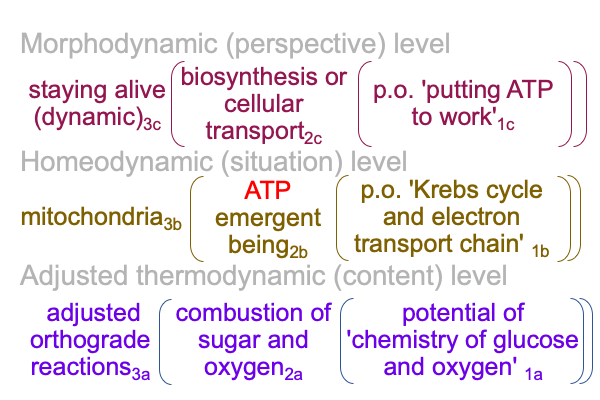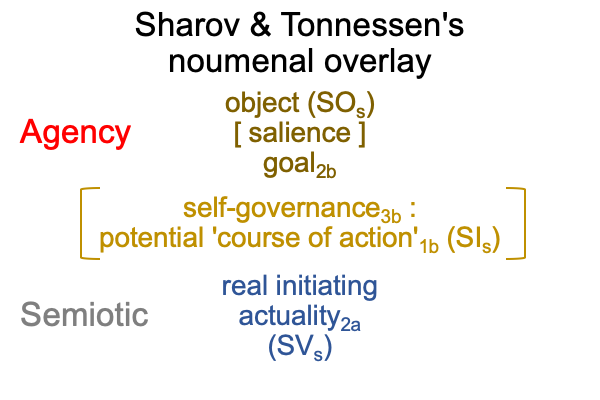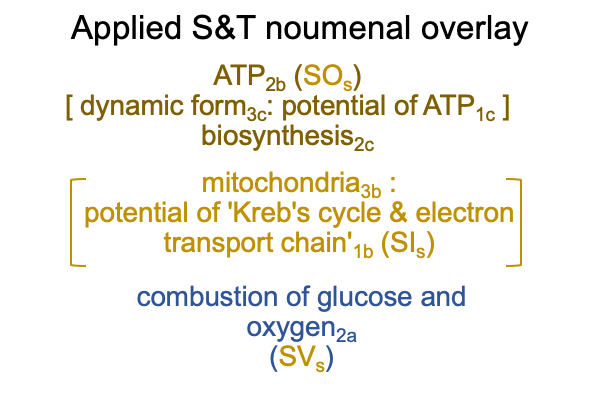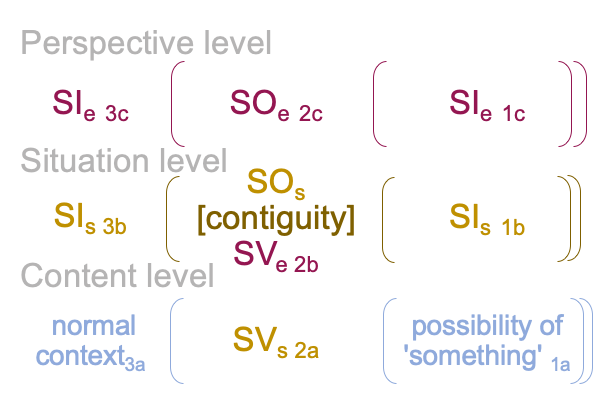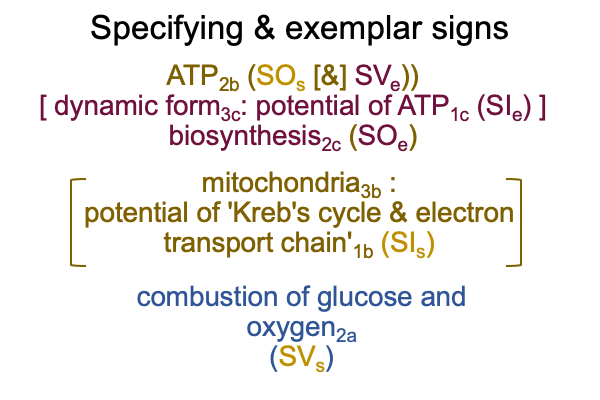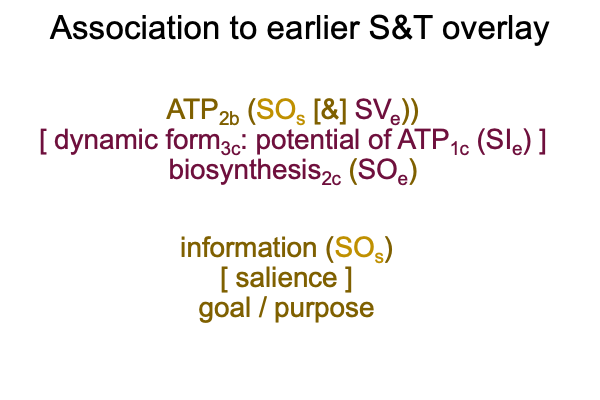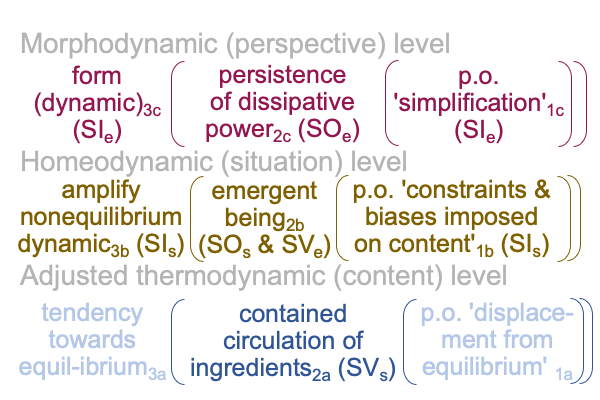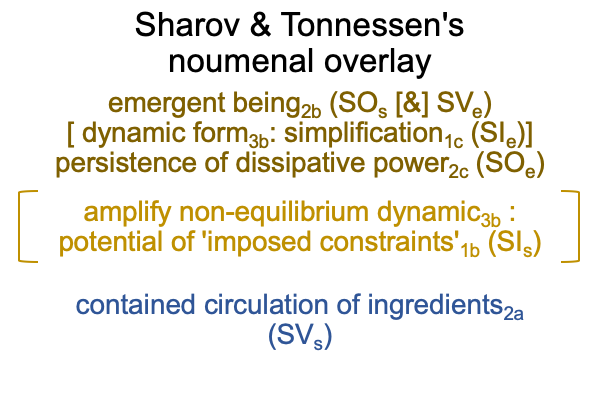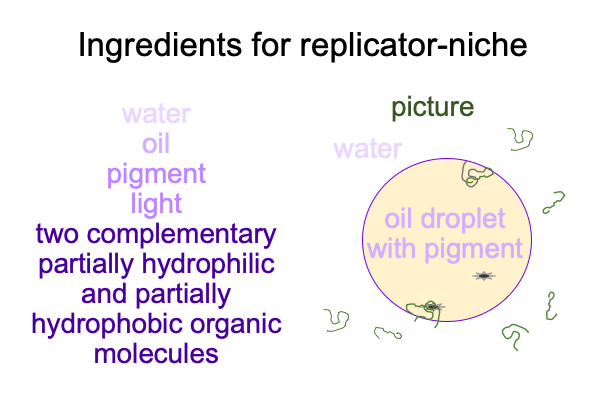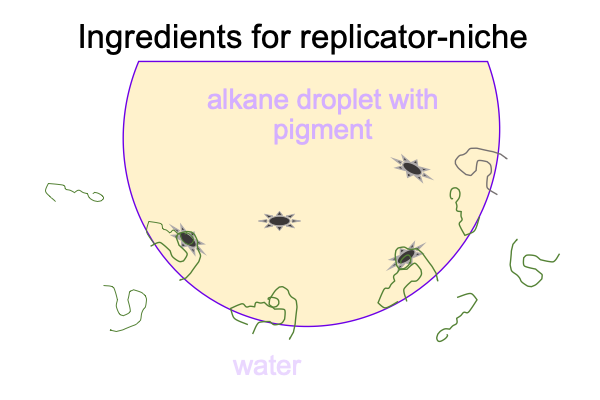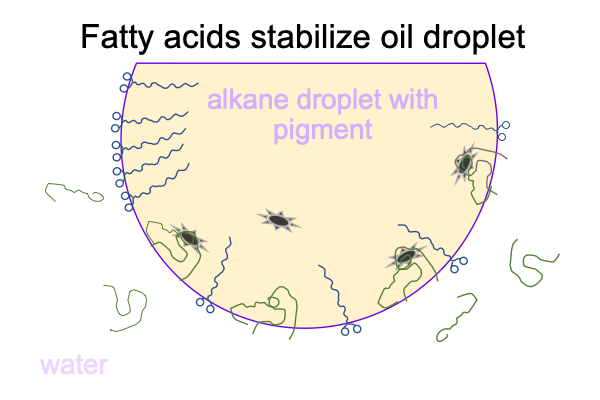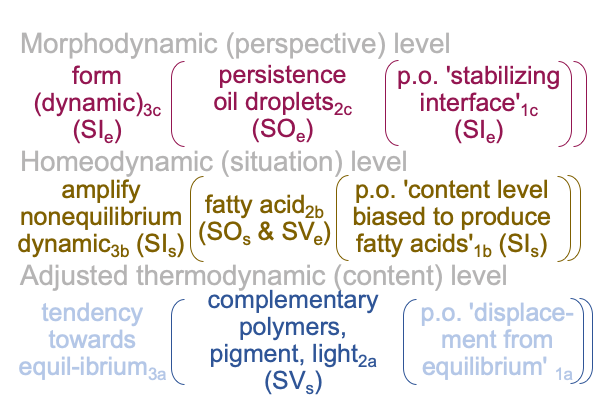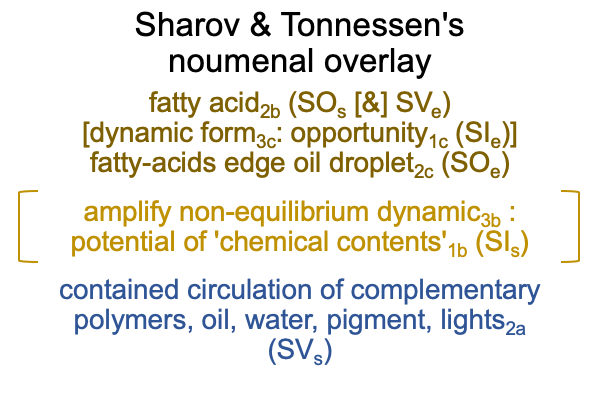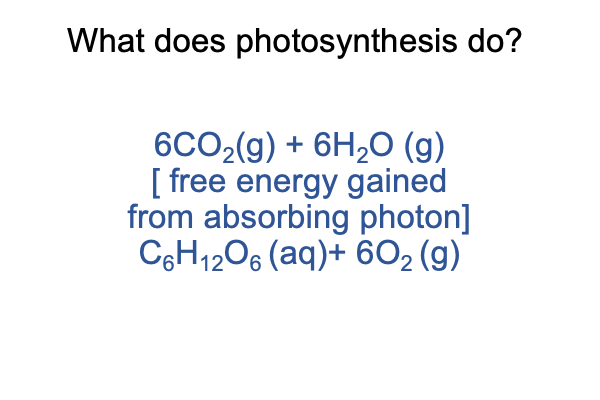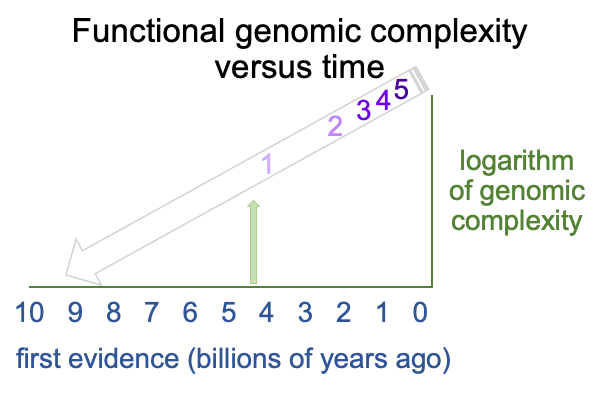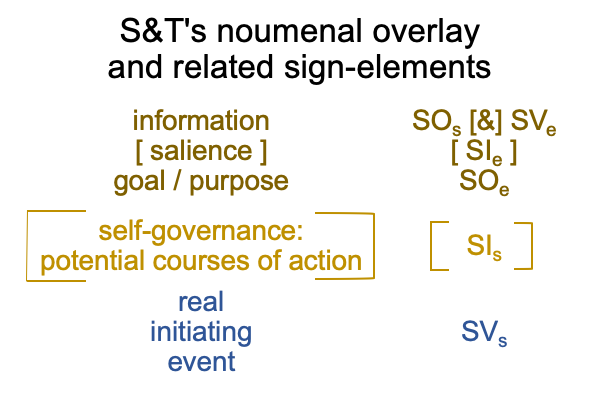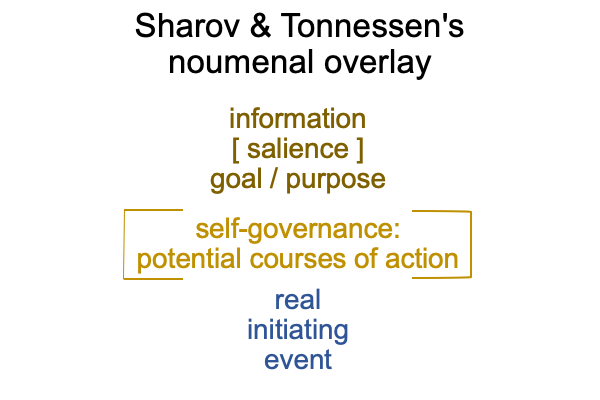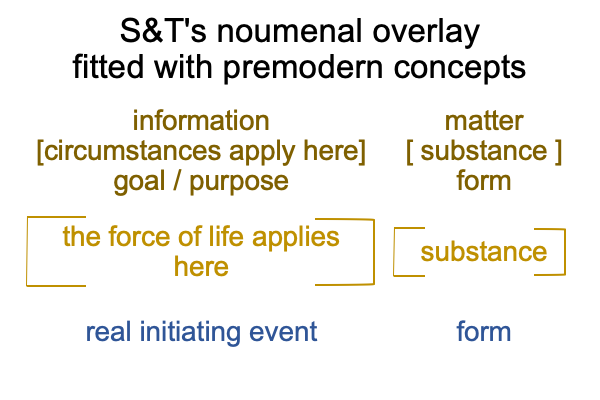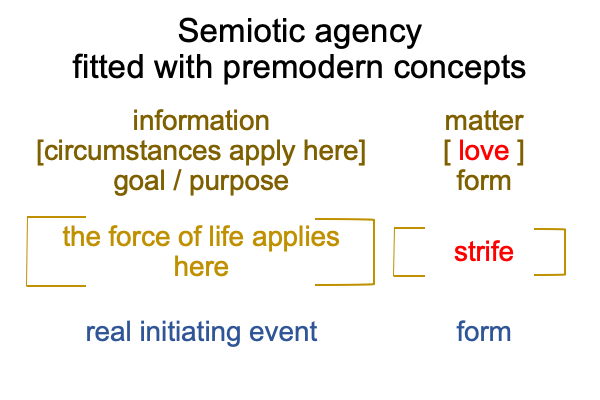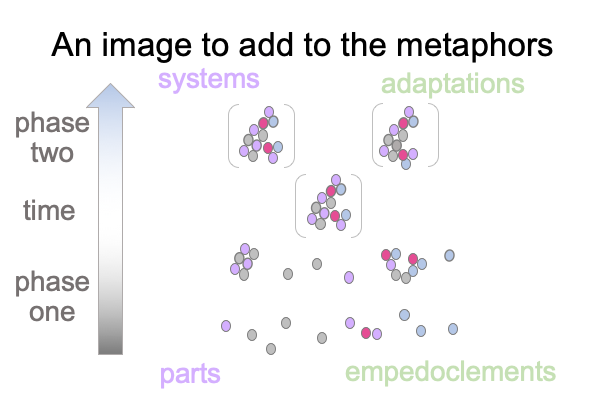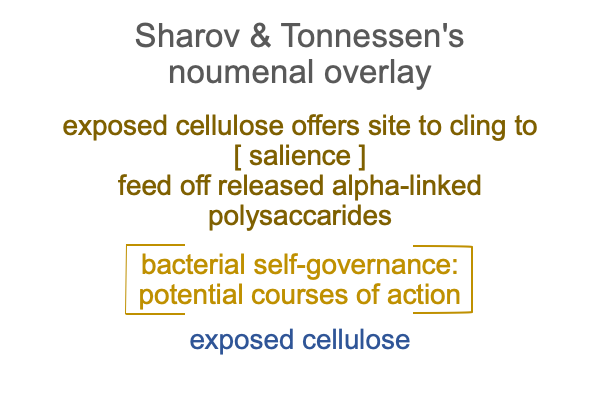Biosemiotics and the Origins of Life on Earth (Part 2 of 8)
0280 Tabaczek’s re-allocates Deacon’s treatment of emergence, without the benefit of Peirce’s category-based nested form. Razie Mah examines Tabaczek’s re-allocation using two works, A Primer on the Category-Based Nested Formand A Primer on Sensible and Social Construction.
The result in the Deacon-Tabaczek interscope for emergence.
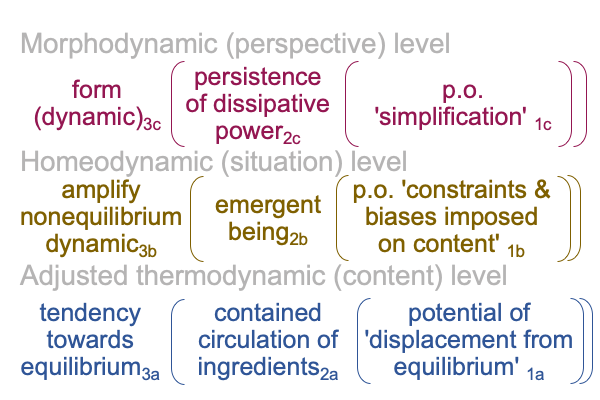
0281 What can I say?
Obviously, a three-level interscope is a nested form composed of nested forms.
In this interscope, Deacon’s terminology is used.
To begin, consider Deacon’s labels for the three levels.
0282 On the content-level, a thermodynamic process that tends towards equilibrium (in a spontaneous sort of way)3abrings the actuality of a contained circulation of ingredients2a, where reagents are separated so that some of the free-energy of their reaction can be captured, into relation with (a situationally induced) displacement from equilibrium1a.
For example, if a dam extracts the gravitational potential and kinetic energy released in a river flowing downstream, then the content-level is the adjusted spontaneous process of water flowing downstream.
0283 On the situation-level, a homeodynamic process capable of extracting the captured energy3b brings the actuality of the embodiment of the captured energy2b into relation with the potential of the various constraints and biases imposed on the content-level nested form1b.
For the example of the hydroelectric dam3b, water is channeled in such a fashion as to drive a turbine1b that produces alternate (and sometimes, direct) voltage in a wire cable2b. The emergent being is electrical “current”2b.
0284 On the perspective-level, a morphodynamic process3c, capable of utilizing the energy captured by the emergent being1c, generates a persisting form2c. The persistent form is like an end point of the emergence2c, because it2c not only dissipates the potential1c of the emergent being2b but it2c “forms” something2c in the process3c. Here, Deacon’s terminology sounds oblique and, perhaps, misleading. The dissipative power2c persists as a form2c, yet “dynamic form” labels the normal context3c. Also, the potential of the emergent being1c is a “simplification”, of sorts. But, is “simplification1c” a satisfying term?
For example, a morphodynamic process3c takes the potential of the alternative electric voltage… or is it current?… in a wire connected (however distantly) to the aforementioned turbine1c and performs some sort of work, such as heating my morning toast2b.
0285 Yes, the example sounds lame. But, with butter and apricot jam, the emergence is really quite satisfying.

